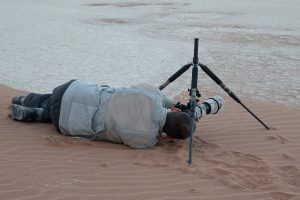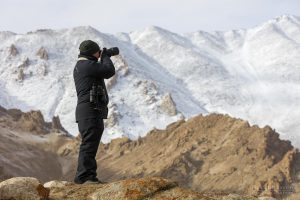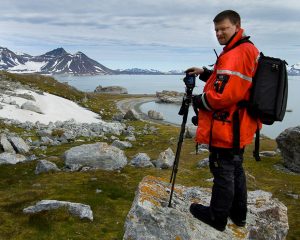We see various insulin pumps described as “waterproof”. But what does it actually mean?
Personally I’m interested in how “life-proof” my devices are. That covers multiple aspects including:
- Water- and dust-proof.
 Things get dusty in the desert (especially if I fall over or commando-crawl while tracking some wildlife with my cameras).
Things get dusty in the desert (especially if I fall over or commando-crawl while tracking some wildlife with my cameras).
When working on small boats there’s always a chance I can fall overboard. Or I can be soaked by rain. - Altitude / air pressure.
 Here in Australia we don’t have mountains above 2300m, but when on other continents I’ve often been above 3000m (up to 4500m so far in the Himalayas).
Here in Australia we don’t have mountains above 2300m, but when on other continents I’ve often been above 3000m (up to 4500m so far in the Himalayas).
Temperature isn’t really an issue for me, as the pump is usually next to my body. As long as it can survive that it’s ok.  It’s not as though I’m walking around naked in polar regions…
It’s not as though I’m walking around naked in polar regions…
But whatever conditions I’m passing through, I don’t want to be worrying about my life-sustaining devices. Or at least I want to know when to worry.
Just like always, I want to just be able to concentrate on life and the job in front of me, such as capturing images like these Cheetah cubs in Namibia:
Air pressure and altitude
The higher the altitude, the lower the air pressure. There can be some variation in air pressure based on weather conditions, but in general terms of mapping air pressure to altitude this table should give you some context:
| Pressure | Altitude above sea level |
|---|---|
| 8849m: Everest summit 5600m: Everest Base Camp |
|
| 500 hPa (50 kPa) | 5000m |
| 700 hPa | 3000m |
| 2228m: Mt. Kosciuszko | |
| 1010 hPa | sea level |
| -9m: Lake Eyre | |
| 1060 hPa (106 kPa) | -320m |
| 1077 hPa | -430m: The Dead Sea |
Pump limits
Manufacturers quantify the ratings of their devices in different ways. “IP” labels are often used for dust/waterproofing, but those categories don’t always mean the same tests were done. For example the minimum test for IPx8 is “immersion, 1 m or more depth”.
I’ve tried to summarise the specs here for all the pumps in the Australian market. Where altitude wasn’t provided by the manufacturer I’ve shown in italics what’s implied by the air pressure limits.
| Pump | Waterproof when new | Air pressure (hPa) | Altitude |
|---|---|---|---|
| YpsoPump | IPX8 1m deep, up to 60min |
500-1060 | -320m to 5000m |
| Animas Vibe | 3.6m deep, up to 24 hours | up to 3048m | |
| Omnipod | IPX8 7.6m deep, up to 60min |
700-1060 | -320m to 3000m |
| Medtronic Paradigm | 700-1060 | -320m to 3000m | |
| Medtronic 670G/770G | 3.6m deep, up to 24 hours | 703-1062 | -320m to 3000m |
| DANA RS | IP28 | 700-1060 | -320m to 3000m |
| Accu-Chek Combo | IPX8 2.5m deep, up to 60min |
500-1060 | “Not tested above 3000m”, but -320m to 5000m |
| Tandem t:slim | IPX7 1m deep, up to 30min |
-396m to 3048m | |
| Accu-Chek Solo | IP22 Don’t get it wet. |
700-1060 | -320m to 3000m PDM: up to 3000m |
These limits are usually arbitrary, just showing how far the devices have been tested. For example I used an Animas Vibe pump at 4000-4500m altitude for over a week and it worked fine (although I did have pens as backup instead of another pump just in case).
Also remember that these ratings are for devices new-from-the-factory. Over time cracks (even “micro-cracks” that are hard to see) might develop in the cases (especially if they’ve been dropped) or in flexible buttons, and the manufacturers usually have warnings about this. The Medtronic 670G/770G pumps have an impressive 3.6m-deep-for-24-hours rating, but they’re also a pump that is renowned for developing large cracks in the casing.
If you’re going to be using any of these devices close to (or beyond) their tested limits, be sure to have a backup and support plan in place!
Devices like PDM handsets are basically phones. And they’re fairly robust against altitude. But the manufacturer can only certify them up to the limit they’ve tested.
Glucose meters
Pumps aren’t the only devices we depend upon. BG meters aren’t waterproof, and some do specify altitude limits they’ve been tested to:
| Meter | Altitude |
|---|---|
| Contour Next One | up to 6301m (!) |
| Accu-Chek Guide | up to 3094m |
| Accu-Chek Mobile | up to 4000m |
Things like phones and Libre scanners can be easily waterproofed.
Summary
It’s important to not go through life blindly and then get surprised and end up in an emergency situation when your life-sustaining equipment is damaged in conditions you should have been prepared for.
I hope this summary provides a useful reference article.



Hi David interesting g read. Yes I am aware of the failure of the 770G case and I will be doing a detailed check if I intend to take into any enviroment that is remotely hostile.
My memory of low temps I was more concerned about my camera function and kept it inside my jacket until I wanted to use it!
Like you the pump was snugly close to my body staying warm under multiple layers.
In Myanmar for a month the tropics played havoc with insulin effectiveness in my pump so I was changing it more often.
Once again a very informative and very readable article with nice pics! Thanks David.
It’s good to think about what you can do and be prepared if the tech fails or is unavailable. Recently my Pharmacist wasn’t able to get my Medtronic sensors from his supplier (I live in Regional NSW and sometimes you remember the city has a few advantages) so I was without sensors for a few days. I kept using my 670G and turned off auto mode and increased my BG testing routine. By manually bolusing I was mostly able to stay in range. It wasn’t ideal but was manageable in the short term.
Sebastian Sasseville from Canada climbed Everest a few years back while using an Animas pump. Way outside pumps specs but it worked the whole way.